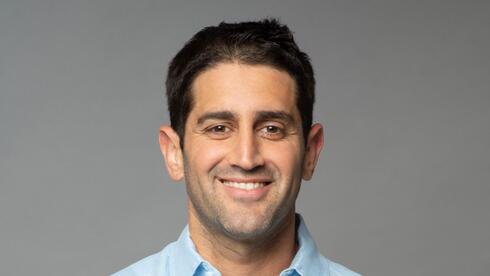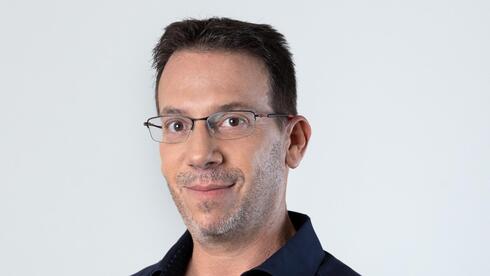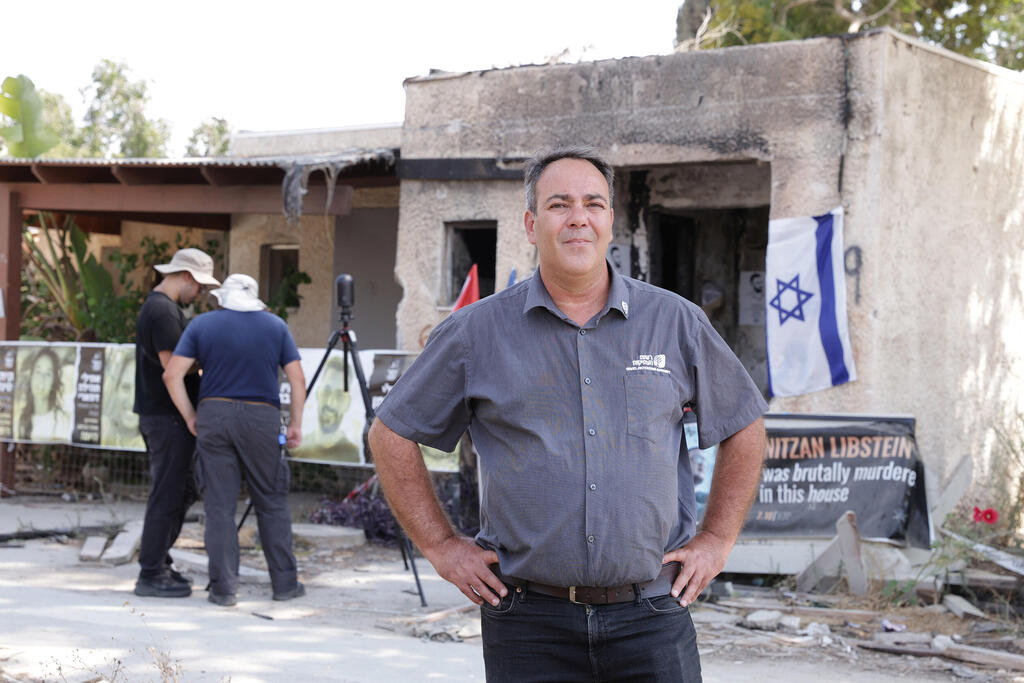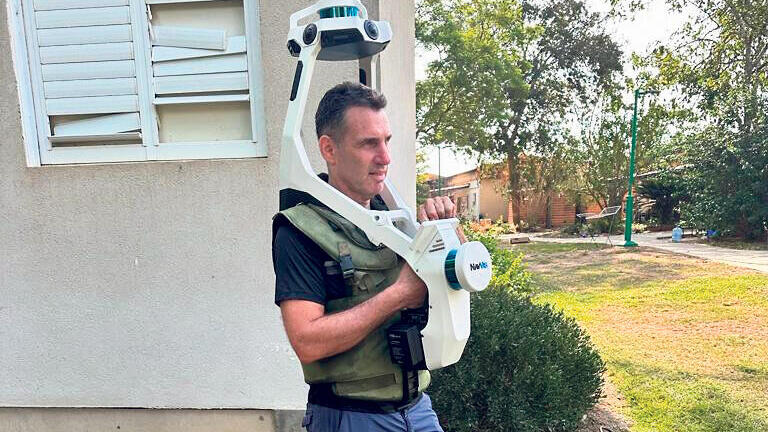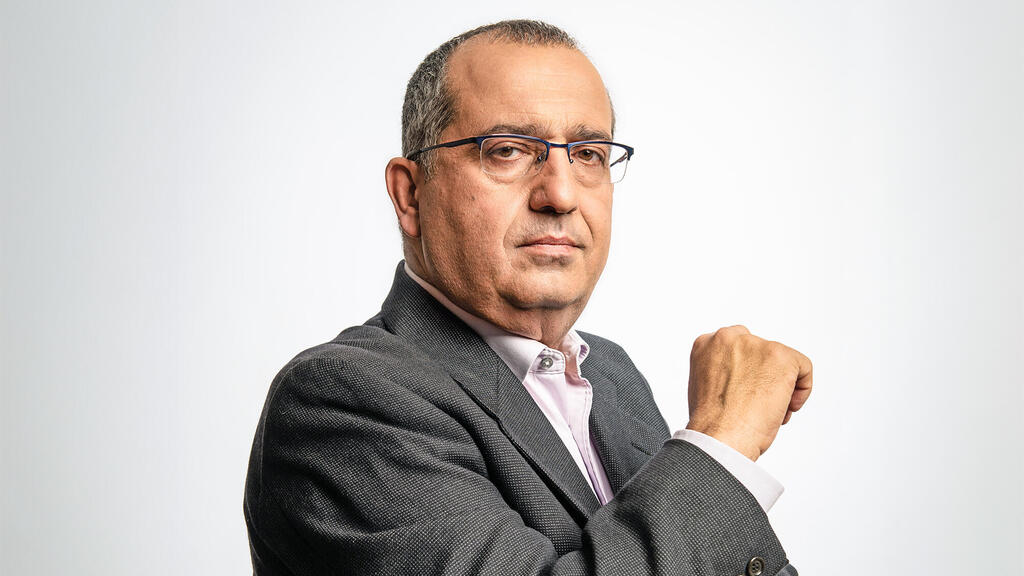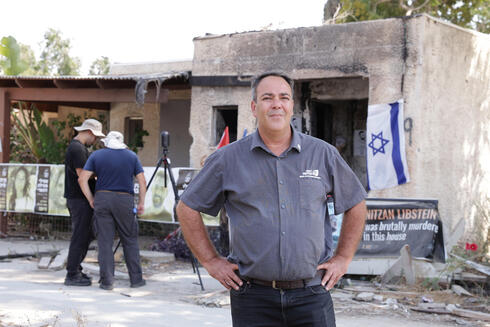
Unveiling the horrors: 3D models of Gaza attack sites revealed
The Antiquities Authority's groundbreaking project brings the devastation of October 7 to virtual life.
For those who have not witnessed the results of the October 7 massacre, understanding the full extent of the horror can be challenging. While the internet is filled with thousands of short videos and 2D photos documenting the events from various angles, these snapshots only capture isolated moments in time. They fail to convey the overwhelming death and destruction that engulfed the area surrounding Gaza for several days. This limited perspective does not allow us to fully grasp the scale of the devastation.
Nir Oz Rimon kindergarten
(Antiquities Authority)
However, this is about to change. An unprecedented project led by the Israeli Antiquities Authority will soon enable anyone interested to delve into the heart of this tragedy. Through detailed 3D models, individuals will be able to virtually explore the sites that were attacked, and even "enter" hundreds of buildings where numerous tragedies occurred. The Authority's personnel have used technology similar to that used for documenting archaeological sites to create these models. This technology, also employed by real estate agents to map and plan field plots, will offer a chillingly realistic experience. Anyone with a computer, from anywhere in the world, will be able to examine every corner of about 500 buildings documented so far across 20 sites attacked by terrorists. The models will display bloodstains, bullet holes, and damaged structures with horrifying accuracy. This extensive database could serve as a virtual museum, aid in investigating the events, assist in prosecuting terrorists, provide an extraordinary educational tool, and combat massacre denial.
For example, it is already possible to use the Antiquities Authority's computers to view an accurate 3D simulation of what remains of the Nova Party site north of Re’im. Every tree, stone, and crevice within a one-kilometer radius was photographed and scanned from multiple angles. The high resolution of these simulations allows experts to differentiate between RPG and grenade shrapnel, pinpoint the origin of bullets that penetrated specific walls, and identify the focus of explosions that caused structural damage.
The home of Shai Hermesh in Kfar Aza
(Antiquities Authority)
This project utilizes photogrammetry technology, which architects, engineers, and city planners use to build 3D models of buildings and urban areas as a precursor to construction and renewal. The Antiquities Authority has been using this technology for about seven years, mapping approximately 300 archaeological sites across the country. "We send a photogrammetry team to each site, and based on this documentation, we plan how to preserve, restore, and make the site accessible to the public," explains Ami Shahar, Director of Conservation at the Antiquities Authority. These models will soon be available to the public through the Authority's new website.
From the distant past to the bloody present
About a month after the massacre, following a field-initiated idea, the Antiquities Authority embarked on a task that brought them from the distant past into the present. They used technology to create a digital project unprecedented in scope and detail. The project is notable not only for the extensive data collected but also for documenting a war zone where a brutal massacre occurred.
To provide context, the Authority explains that creating a 3D model of just one building requires 35,000 photos taken from every possible angle. Mapping each building in the affected areas takes from a few hours to several days, accumulating vast amounts of information. The team, comprising approximately 30 Antiquities Authority employees and private sector experts, has collected around 350 terabytes of data, including over 2 million photos.
Nova Party site
(Antiquities Authority)
Photogrammetry involves accurately describing objects using images, based on triangulation, which calculates distances using trigonometric laws. Powerful computers now produce point clouds—three-dimensional representations of the data—within seconds. To meet the computational demands, the Antiquities Authority purchased five high-performance computers, custom-built with processing capabilities significantly higher than standard models. These computers required relocation to a more air-conditioned room due to the intense heat they generated.
David Zell, Head of Research, Development, and Heritage at the Antiquities Authority, who manages the project, explains: "We use still cameras, small drones for close-up photos, a large drone with five cameras for aerial views, a portable laser scanner mounted on a van, and a stationary laser scanner. We build digital models using images from the drones and point clouds from the laser scanners, creating highly accurate and detailed 3D models."
The project, like other initiatives that emerged from the crisis, was not initially planned. "One of our field workers, who was recruited into the IDF reserves at the war's outbreak, suggested we leverage his photogrammetric documentation skills. I immediately saw the potential for this to be our contribution to the war," says Shahar.
Following this conversation, Shahar contacted Eli Escusido, Director General of the Antiquities Authority, to propose using the Authority's resources to document the destruction in the Gaza Envelope for commemoration and evidence preservation. Nathaniel Isaac, then Director General of the Ministry of Heritage, approved the necessary funding, including about 10 million shekels for fieldwork, technological upgrades, and equipment. Additional funds were provided by the Takuma Directorate, which handles reconstruction in the Gaza Envelope.
Kibbutz Be'eri
(Antiquities Authority)
By early November, less than a month after the massacre, a team began documenting Kfar Gaza, Nir Oz, and Be’eri. Since then, they have documented all attacked settlements and the Nova party site. They continue to document additional homes with tenant approval.
Much more than a virtual museum
While it is too early to determine all potential uses for the simulations, it is clear that they will serve multiple purposes. "One goal is to make the materials accessible to the public. We are focused on documenting now, and later we will decide on the specific uses," says Zell. Shahar adds, "These models could become a virtual museum, a national treasure for future generations. They will allow people to see and experience the past, similar to how we learned about the Holocaust through books, photos, and films."
The Antiquities Authority has discovered that the 3D models can also be adapted to other significant needs. For instance, "Amigour used our materials to plan rehabilitation, marking buildings for demolition or assessing damage," says Shahar. The models have also been used by the Air Force and the Israel Police for investigations and evidence gathering.
According to Shahar, the models are so detailed and accurate that they could be used as admissible legal evidence. "The visuals are photo-realistic and based on actual photographs, anchored in a geographic information system (GIS) to ensure accuracy," he explains.
Reim junction
(Antiquities Authrity)
Zell notes, "The documentation of 500 buildings in high resolution is extraordinary. I am not aware of any other similar documentation of combat results in civilian areas. This may be the first time such comprehensive documentation has been done for legal, commemorative, and rehabilitative purposes."
Prof. Moshe Caine from Hadassah Academic College Jerusalem is an expert in the preservation, restoration and display of cultural heritage that accompanies the project. According to him, the only precedent for photogrammetric documentation during war was in Ukraine, but he qualifies: "They did not do such things there, but mainly scanned sites and heritage objects that could be damaged in the war, for example churches or statues."
According to Caine, "From an absolute point of view, the Authority’s project is huge in scope, but it has other parameters that make it extraordinary, including the complexity of the content and the sensitivity that was required to implement it. It was difficult to film in the first weeks in Be’eri or Nir Oz inside the houses with the evil, with the smell. It's also difficult from a technical point of view, because there is no lighting, everything is black and sooty, and there are things that get in the way like trees, stones, tables, everything is a big mess. If you don't have access in all directions, it makes it difficult building these models".
Shahar testifies to the mental difficulty involved in working on the project, especially in the first weeks: "A horrifying sight I remember was a kindergarten in Nir Oz, all sooty and burned. When I entered the kindergarten, I saw on the right side a sign with clippings in the shape of shofars glued to it, on which these tender children wrote requests for forgiveness on the occasion of Yom Kippur, my eye caught a shofar on which a child wrote, 'I have done nothing wrong.' After this incident I came home shattered. I couldn't function."
Despite the uniqueness of the project, and the knowledge that Prof. Caine’s colleagues around the world can derive from it, he describes a feeling of alienation. "They are interested," he says, "but I don't need to explain to you what our international situation is today. I'll give you an example: not long ago there was a conference in Florence. Like every year I was supposed to present at it, and when they asked me what I wanted to present this year I said that I was working on something very different. The organizer of the conference, whom I have known for many years and is a friend of Israel, told me, 'Let's not do it, because it creates disputes and objections.'" Other reasons Caine is not in a hurry to reveal the project to the world are related to "issues of copyright in the images that are used to build the models, and a fear of harming the privacy of the families whose house was documented."
Not a substitute for physical commemoration
While it is still too early to know what the simulations produced by the Antiquities Authority might be used for in the future, it is clear to everyone that one of the main uses will be in the field of memory and commemoration, through the establishment of a virtual museum. However, many of the residents of the Gaza Envelope insist that the virtual memory can never replace the tangible appearance on the ground, and are therefore strongly opposed to the demolition of the damaged buildings. The journalist and former GLA commander, Shimon Elkabetz, whose daughter Sivan and her partner Naor Hassidim were murdered in their home in Kfar Aza, is a member of the team established by the kibbutz to plan the documentation and commemoration.
After participating in the meeting where the models built by the Antiquities Authority were presented, he says: "The digital memory is like a flight simulation. The simulation illustrates the flight and can provide tools, but nothing in it resembles a real flight. It's good that someone from India who doesn't get to visit Israel very often can be exposed to simulations. But I think there is no substitute for the real thing: the walls sprayed with bullets and the smell of death. During the tour you feel like you are in Auschwitz. I tell you this as someone who accompanies people from abroad and delegations and chairmen of parliaments from all over the world and members of the Shin Bet, Mossad, police, army. Everyone who enters Kfar Aza does not leave the kibbutz the same person. That's why I think there is no substitute for the real thing. The memory needs to be seen from several angles: the bereavement, the failure and the slaughter, the cries of our children, who waited for hours and hours and there was no army and there was no state and there was nothing. But also the revival and creation, and the stories of heroism."
In light of this, Elkabetz believes that much of the sites should be left as monuments. "In the house next to my daughter Sivan’s house, Netta Epstein, a soldier on leave, jumped on a grenade, thereby saving the life of his girlfriend; in the house opposite, a young girl was found murdered; next to her lived Nitzan, who was murdered like his father, the head of the council (the late Ofir Libstein). Nitzan cried out for help and begged them to come save him. That's why the physical memory, certainly of this neighborhood, must remain. If we succeed in preventing the next October 7 by making the memory a meaningful one, we have done our part for future generations. I have already lost the one dearest to me."




